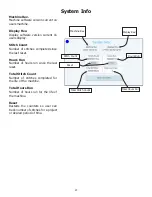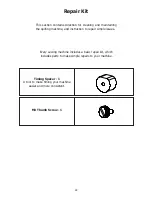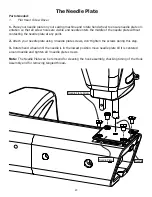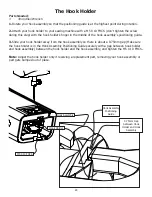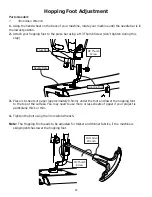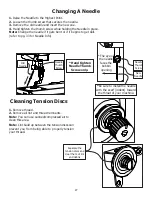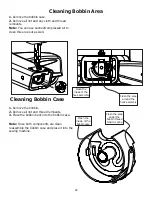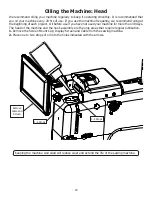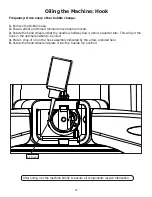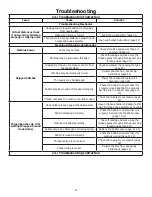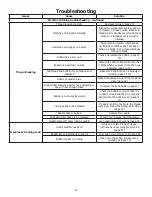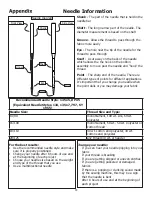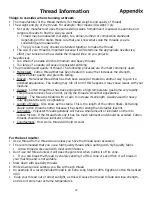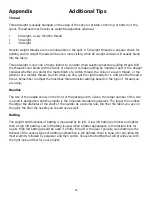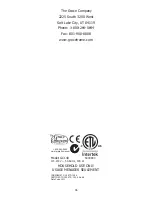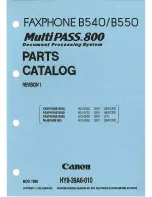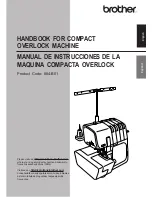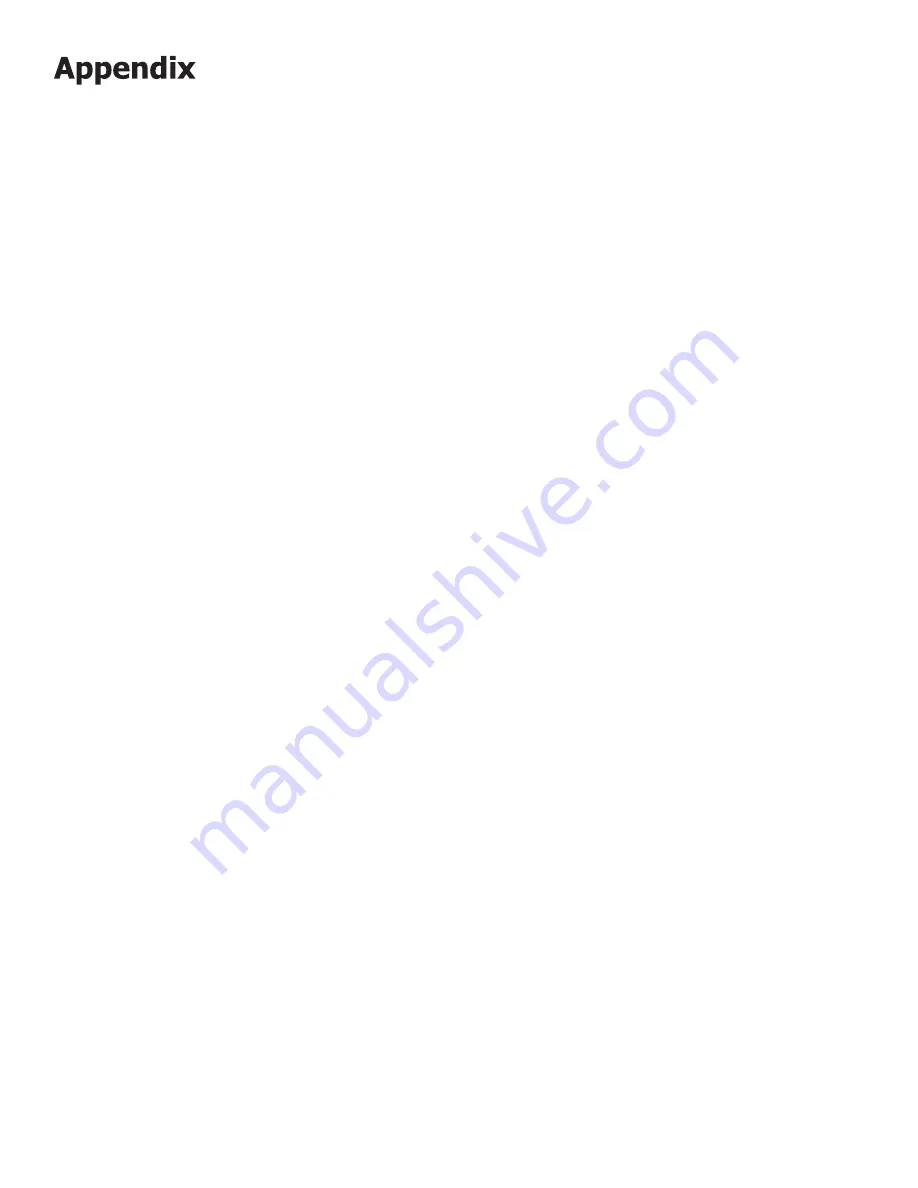
Additional Tips
Thread
Thread weight is usually stamped on the edge of the spool or printed on the top or bottom of the
spool. Thread becomes heavier as weight designations
decrease
.
•
60 weight, a very thin/fine thread
•
50 weight
•
40 weight
Heavier weight threads are more noticeable on the quilt. A 50 weight thread is a popular choice for
quilting and 40 weight threads will be even more visible, while 60 weight versions will usually blend
into the fabric.
Thread weight is only one of many factors to consider when selecting machine quilting thread. Will
the thread’s color blend with the fabric or stand out to make quilting an important part of the design?
Consider whether you prefer the matte finish of a cotton thread, the shine of a rayon thread, or the
glimmer of a metallic thread. Go with what you like, get the right needle for it, and give the thread a
tryout. Remember to adjust the machines thread tension settings based on the type of thread you
are using.
Needles
The size of the needle shows on the front of the package with 2 sizes, the larger number of the two
is a metric designation and the smaller is the American standard equivalent. The larger the number,
the larger the diameter of the shaft of the needle. As a general rule, the finer the fabric you use on
the quilt, the finer the needle you should use as well.
Batting
The weight and thickness of batting is measured by its loft. A low loft batting is thinner and lighter
than a high loft batting. Low loft batting is used when a flatter appearance is the desired look for
a quilt. High loft batting should be used if a fluffy full quilt is the goal. Typically, wool batting is the
thickest of the various types of batting and bamboo is the lightest. Wool is known for providing the
most warmth, followed by polyester and then cotton. Choose the batting that will provide you with
the right look and feel for your project.
35

